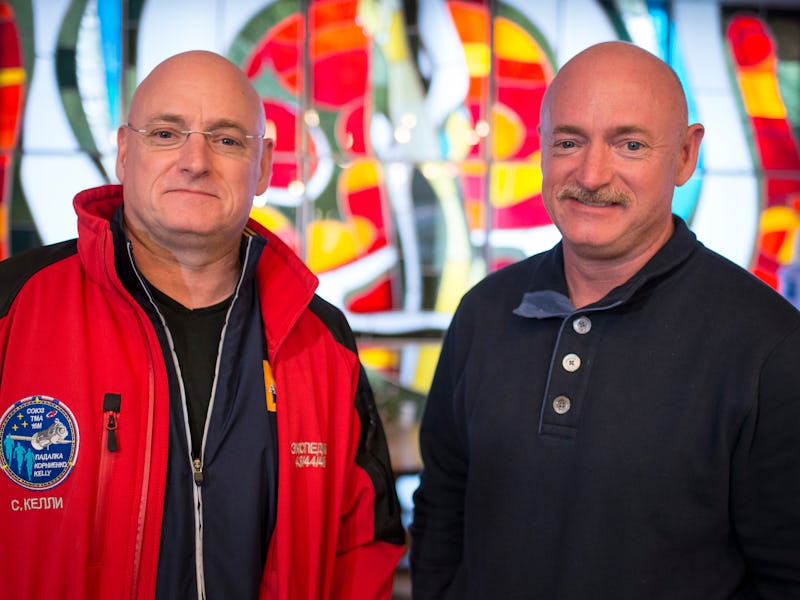Space Literally Squashes the Muscles in Your Spine
But yoga might help.

When astronauts return from space, one of the most common things we hear about is the strange fact that they’re slightly taller — without all that gravity crunching you down, your spine elongates itself so you can live your tallest life.
Not so fast, according to research published in the journal Spine. Dr. Alan Hargens, a professor of orthopedic surgery at the University of California, San Diego, and lead author of the study, says that whole getting taller thing is maybe just a temporary thing. There’s actually no increase in spinal disc height; rather, spines are becoming straighter and stiffer - which accounts for the added height - but the muscles themselves are atrophying at a much greater rate than expected. They’re also recovering more slowly. Hargens and his colleagues used MRIs to study how six NASA crew members physically adapted to around six months in space. They found that in various pre- and post-flight tests, their spines were growing stiff and losing a lot of muscle, particularly in the neck. There was no evidence that the discs themselves were changing - so when NASA astronaut Scott Kelly famously returned to earth taller than his identical twin brother, that was actually due to his spine straightening and growing stiffer than it would ever have the chance to on Earth.
The neck seems especially prone to weakening, so they become like a bobblehead,” Hargens told Inverse by phone. “We know the astronauts now probably don’t get enough exercise for their neck muscles, so that points to better exercises [being needed] for the crew, especially going to Mars and coming back. You want their spines to be fully functional.”
UC San Diego's research logo displayed on the International Space Station.
Back pain is a long-standing occupational hazard for astronauts, and the longer they’re in space, the worse it’s likely to be - meaning that the way things are going right now, the journey to Mars might ultimately prove too much for our bodies. So how to combat that muscle atrophy? Or are all space colonists doomed to be short and hunch-backed? When you’re walking around in normal gravity, you’ve got stabilizing, slow-twitch muscles fibers that maintain your upright posture - they don’t contract very strongly, but they do contract for most of the day. When you’re in space, those muscles waste away.
Hargan points to core-strengthening exercises like yoga, but says the best defense against the shrinkage is to reproduce normal (that is, what they’d do in Earth) daily activities. There’s currently a heavy emphasis on maintaining muscle and bone density in the current exercise hardware on the International Space Station, but Hargan thinks weightlifting exercises that go up to 600 pounds actually create too much pressure for the spine. He believes simple activities like upright walking, and anything with an emphasis on strengthening the neck, would better serve astronauts on extended missions. It’s difficult to say for sure whether the atrophy could be mitigated entirely, but Hargens believes a new, consistent regimen of physical activity that reproduces the regular range of motion you experience on Earth is the best defense.
“Elon Musk wants to send a million people to Mars”, Hargens said. “I think he’s really good at making cars and rockets, but we need to put more effort into maintaining these astronauts’ bodies.”